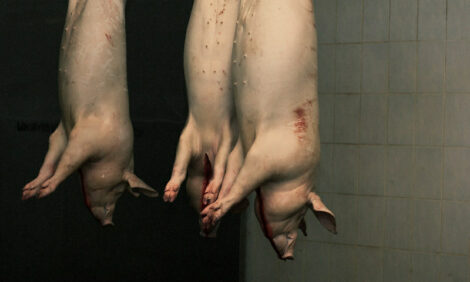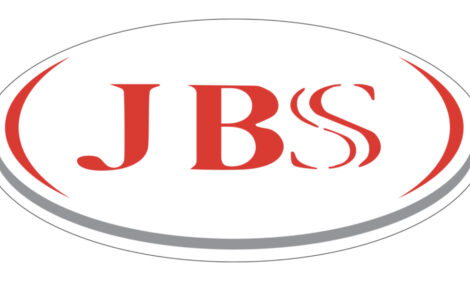



Hungary hog production slows
HUNGARY - The hog market in Hungary became saturated during the 2002/2003 winter. With massive support from the GOH, exports grew sharply. High feed grain prices and low profitability will slow hog production and stock build up in 2003/2004.Report Highlights
Hungary’s EU membership in May 2004 will not result in tariffs increases for U.S. pork and edible offal. However, unsettled animal product disputes with the EU limit export opportunities.
Production
General
Hungary’s opening swine stock in January 2003 was 3 percent above the previous year level.
By April 2003, the number of slaughter hogs was 10 percent above the same figures of 2002
and the number of piglets and sows was rather low. These figures indicated a heavily
saturated market.
The GOH managed to reduce hog numbers by August 2003. Seasonal animal stock building
will be weaker than in other years due to high feed prices and bearish demands for pork.
Production Policy
Hog farmers and slaughterers receive several kinds of production and marketing support
from the federal government. These range from direct payments for quality bonuses,
intervention purchase payments, partial write-off of interest on investment loans and interest
reimbursements for operating loans.
Hungary will become a member of the European Union as of May 2004. Generally speaking,
the competitive position of the poultry and swine sectors, and in particular the sheep sector,
will be worse after EU membership, at least in the first years. EU intervention prices of feed
grains are high enough to generate about a 15 percent grain price increase in 2004/2005,
even if the June 2003 negotiations on the modification of the CAP result in intervention price
reductions.
Some subsidies (such as export subsidies, meat storage, some breeding programs, etc.) are
only paid as the result of a competitive bidding process open for all EU member states.
Hungarian farmers are still inexperienced at writing tenders and, in many instances, are
short of collateral and credit needed for performance bonds.
The hog and poultry sectors will be negatively affected by the forecasted increase of
domestic feed grain prices (though most input prices are now considerably lower than EU
prices). Overall production efficiency in the swine and poultry sectors is less than in the EU
due to a low level of capital investment. Feed conversion is up to 30 percent worse in
Hungary and the quality of the product is often not good enough for the EU market (for
example, it is estimated that only 60% of slaughtered hogs meet the EUROP quality
standards).
Consumption
After bottoming out in 1998 at 26.5 kg/year, per capita pork consumption has started to
grow again. BSE and FMD rumors eroded beef consumption, but pork has had to compete
with poultry meat on image (poultry meat is believed to be healthier). Pork consumption
from household production or from unregistered local sources is still significant, and this adds
uncertainty to official consumption figures.
Prices
Domestic live hog producer prices in Hungary had been above the EU market prices since
August 2002 until May, 2003. This caused the pork market to become saturated and
domestic consumption to weaken. GOH programs helped to reduce stocks but hog prices
went down 17 percent in the first half of 2003.
A devastating drought in 2003 increased feed grain prices beyond the price rise of the
consolidating hog market. Livestock and poultry associations even lobbied for feed and feed
grain export ban at GOH in September-October.
Domestic hog prices will be depressed, just above the average production costs, until the
first half of 2004.
Trade
General
Hungary’s swine industry is very much export oriented and about 20-25 percent of pork
produced is for export markets. In some years, live hog sales are also significant.
Exports of live hogs in the first half of 2003 were low, about 77 percent of the same figure in
2002. Main destinations were the neighboring non-EU countries, Romania, Bosnia and
Croatia.
Pork sales were 12 percent above the previous year results in the first half of 2003.
Enhanced sales can be attributed to GOH market access programs (see at Export Subsidies).
Reduced support for exports and stagnating animal stock will result in lower exports for the
second half of 2003 and 2004.
Imports of lower quality frozen meat and edible offal for further processing have been stable
in the 15,000-30,000 MT range in recent years. Pork imports from the EU increased 20
percent in 2002 on the basis of low prices in the EU. But in the first seven months of 2003,
pork imports went back to normal.
Competitive Situation for US Exports
Product certification has become a major trade issue since Hungary harmonizing its
veterinary regime with the EU. Continuous communication with importers and regulators is
necessary in order to follow the ever-changing requirements for handling edible offal,
specified risk materials (SRM) for BSE, certifications and other technical issues. There are
currently no valid USDA/FSIS meat export certificates for Hungary. From May, 2004 Hungary will use the relevant EU import rules.
Export Subsidies
Under the WTO export subsidy commitments Hungary has very much limited opportunity to
give export subsidies to hog and pork. Because of severe overproduction (more exactly low
consumption and exports) during the winter of 2002 and continuing over 2003, GOH was
forced to spend about HUF 15.5 billion (USD 68 million) on marketing and export support for
the swine sector in 2003.
Direct export support was offered on live slaughter hogs HUF 65-90 (USD 0.28-0.4)/kg for a
12,600 MT quota, and fresh/chilled half carcass, HUF 150 (USD 0.66)/kg for 5,000 head of
hogs. Above subsidies are given for exports to any countries excluding the EU, Czech and
Slovak Republic. Marketing support included subsidies on cold storage costs of products,
slaughter costs of overweight hogs, packaging material, waste treatment, food hygiene costs
etc.
With EU membership, Hungary’s export subsidy system will be terminated and the full EU
export refund system will be applied.
No EU subsidies have been used for products exported to Hungary in recent years as a result
of the ‘double zero’ agreement.
Tariff Changes
On January 1, 2003, Hungary published its revised tariff schedule. As with last year, the first column (I) shows GSP tariffs on imports from developing countries, the second column (II) contains the MFN tariffs, and the third column (III) contains the preferential tariffs based on free trade agreements with the EU, EFTA, Turkey, Israel, Bulgaria, Czech Republic, Estonia, Latvia, Poland, Romania, Slovakia, and Slovenia (the latter eight countries will be referred to later as "CEFTA"). If a tariff is not set for the 3rd sub-column, the MFN tariff is used. Under separate decrees, the Government of Hungary announced further preferential tariffs under quota (TRQ) for imports from:
- The EU and CEFTA (Order #18/2002 Sep. 20.)
- All countries (unilaterally given quotas)(Order #1/2003 Jan 6.)
- All countries (GATT quotas) (Order #23/2002 Nov.30.)
As of May, 2004 Hungary is going to take over the EU outside tariff system. The number of
potential export products from the United States to Hungary where EU membership brings a
higher tariff is surprisingly limited. These products are beef, poultry meat, barley, rice, some
beef preparations, margarine and apple juice concentrate. Hungary imports these
commodities regularly, and in some years from the United States. With the exception of rice,
Hungary is also often a net exporter of these commodities.
Edible offal (hog and cattle) including poultry liver from the US will meet lower tariffs, but
purchases very much depend on domestic demands and future EU technical import
restrictions.
Further Information
To read the full report which includes tables, please click here. (PDF Format)
Source: USDA, Foreign Agricultural Service - 11th November 2003






